What Science Is Launching To Space?
What Science is Launching to Space?

The tenth SpaceX cargo resupply mission launched to the International Space Station on Feb. 18, and is carrying science ranging from protein crystal growth studies to Earth science payloads. Here’s a rundown of some of the highlights heading to the orbiting laboratory.

The CASIS PCG 5 investigation will crystallize a human monoclonal antibody, developed by Merck Research Labs, that is currently undergoing clinical trials for the treatment of immunological disease. Results from this investigation have the potential to improve the way monoclonal antibody treatments are administered on Earth.

Without proteins, the human body would be unable to repair, regulate or protect itself. Crystallizing proteins provides better views of their structure, which helps scientists to better understand how they function. Often times, proteins crystallized in microgravity are of higher quality than those crystallized on Earth. LMM Biophysics 1 explores that phenomena by examining the movement of single protein molecules in microgravity. Once scientists understand how these proteins function, they can be used to design new drugs that interact with the protein in specific ways and fight disease.

Much like LMM Biophysics 1, LMM Biophysics 3 aims to use crystallography to examine molecules that are too small to be seen under a microscope, in order to best predict what types of drugs will interact best with certain kinds of proteins. LMM Biophysics 3 will look specifically into which types of crystals thrive and benefit from growth in microgravity, where Earth’s gravity won’t interfere with their formation. Currently, the success rate is poor for crystals grown even in the best of laboratories. High quality, space-grown crystals could improve research for a wide range of diseases, as well as microgravity-related problems such as radiation damage, bone loss and muscle atrophy.


Nanobiosym Predictive Pathogen Mutation Study (Nanobiosym Genes) will analyze two strains of bacterial mutations aboard the station, providing data that may be helpful in refining models of drug resistance and support the development of better medicines to counteract the resistant strains.

During the Microgravity Expanded Stem Cells investigation, crew members will observe cell growth and morphological characteristics in microgravity and analyze gene expression profiles of cells grown on the station. This information will provide insight into how human cancers start and spread, which aids in the development of prevention and treatment plans. Results from this investigation could lead to the treatment of disease and injury in space, as well as provide a way to improve stem cell production for human therapy on Earth.

The Lightning Imaging Sensor will measure the amount, rate and energy of lightning as it strikes around the world. Understanding the processes that cause lightning and the connections between lightning and subsequent severe weather events is a key to improving weather predictions and saving life and property.

From the vantage of the station, the LIS instrument will sample lightning over a wider geographical area than any previous sensor.

Future robotic spacecraft will need advanced autopilot systems to help them safely navigate and rendezvous with other objects, as they will be operating thousands of miles from Earth.

The Raven (STP-H5 Raven) studies a real-time spacecraft navigation system that provides the eyes and intelligence to see a target and steer toward it safely. Research from Raven can be applied toward unmanned vehicles both on Earth and in space, including potential use for systems in NASA’s future human deep space exploration.

SAGE III will measure stratospheric ozone, aerosols, and other trace gases by locking onto the sun or moon and scanning a thin profile of Earth’s atmosphere.

These measurements will allow national and international leaders to make informed policy decisions regarding the protection and preservation of Earth’s ozone layer. Ozone in the atmosphere protects Earth’s inhabitants, including humans, plants and animals, from harmful radiation from the sun, which can cause long-term problems such as cataracts, cancer and reduced crop yield.

Tissue Regeneration-Bone Defect (Rodent Research-4) a U.S. National Laboratory investigation sponsored by the Center for the Advancement of Science in Space (CASIS) and the U.S. Army Medical Research and Materiel Command, studies what prevents other vertebrates such as rodents and humans from re-growing lost bone and tissue, and how microgravity conditions impact the process.

Results will provide a new understanding of the biological reasons behind a human’s inability to grow a lost limb at the wound site, and could lead to new treatment options for the more than 30% of the patient.
Make sure to follow us on Tumblr for your regular dose of space: http://nasa.tumblr.com
More Posts from Nasa and Others
What’s Up for April 2016?
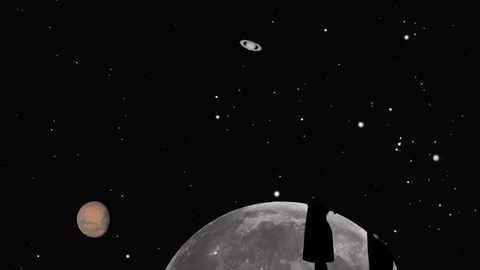
Jupiter, Mars, the Lyrid meteor shower and 2016’s best views of Mercury are all visible in the sky this month.
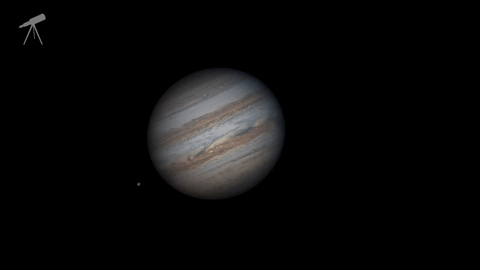
Jupiter, where our Juno mission will begin orbiting on July 4, continues to shine almost as brightly this month as last. And eagle-eyed telescope viewers will see a transit, a shadow transit, an occultation and an eclipse of Jupiter’s moons- all in one night: April 6-7.
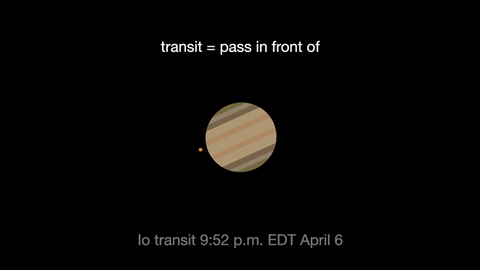
Io transits first, crossing the planet beginning at 9:52 p.m. EDT. It’s shadow can be seen less than an hour later.
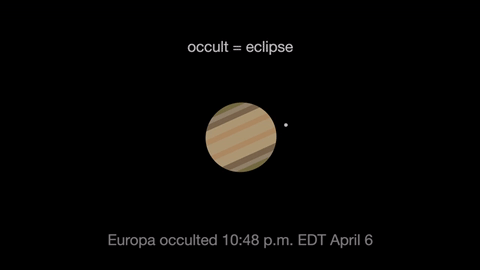
Next Jupiter occults, or eclipses, Europa as Europa slips behind the giant planet at 10:48 p.m. EDT. At 3 a.m. Europa reappears from its eclipse, dramatically leaving the shadow of Jupiter.
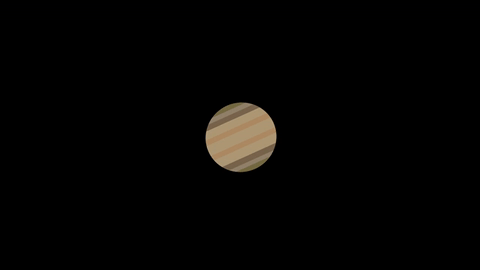
Ganymede transits the planet beginning at 1:01 EDT April 7.
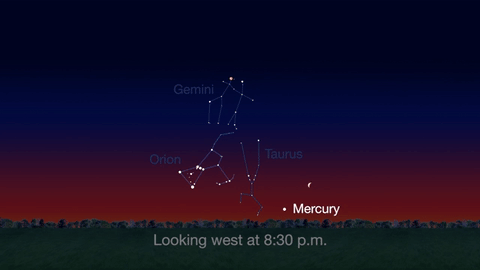
Check out the other planets in April, too! Mercury is always a challenging object to view, but this month you can spot it after sunset about 10 degrees above the horizon. Through a telescope you can see its phase. It will appear like a tiny crescent moon, with about 1/3 of its disk illuminated.
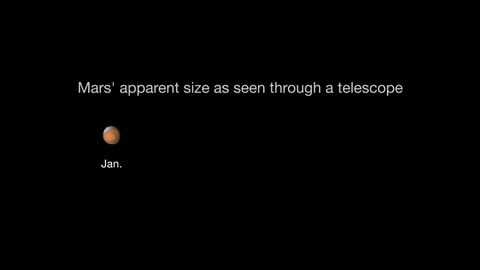
Mars is finally visible before midnight this month. It rises in the southeast at about 10 p.m. by the end of April. The best observing of Mars will be when it is highest in the sky. This means a few hours before dawn. Its brightness and apparent size increase dramatically this month. By month’s end, Mars appears nearly twice as bright as at the beginning of the month.
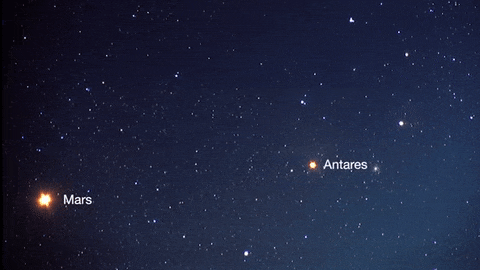
About mid-month you’ll see Mars near its rival in the sky: the similar-colored red supergiant star Antares. The name “Antares” means “equal to or rival of Mars”.
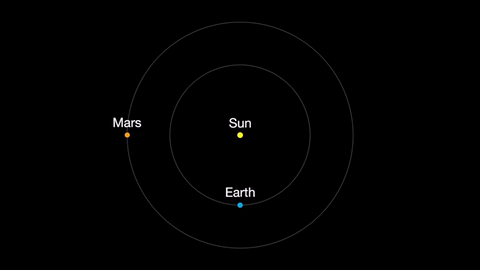
Earth moves almost twice as fast as Mars does, so it often passes Mars in their race around the sun. This causes “retrograde motion”: an illusion we see from our viewpoint on Earth.
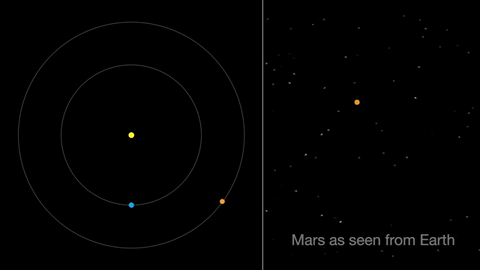
Retrograde motion happens as Earth catches up to Mars, causing Mars to appear slow to slow its eastward motion against the stars. After a few days, when Earth has overtaken Mars, the Red Planet seems to move westward. Eventually, Earth moves far enough around its orbit that Mars appears to be moving eastward again.
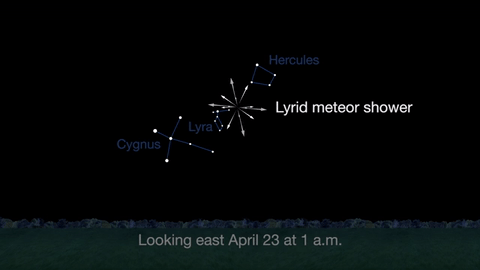
April features one meteor shower, the Lyrids. This year the Lyrids are marred by the full moon. The best time to view will be just before dawn on April 23, when the constellation Lyra is overhead and the moon will be near to setting.
With all of these great things to spot in the sky this month, be sure to get outside and look up!
Make sure to follow us on Tumblr for your regular dose of space: http://nasa.tumblr.com
What was the hardest part in training to go to space?
One of the most challenging parts of space training was learning how to use the space suit. We weigh over 400 pounds in the space suit, and since it is pressurized, each movement of your hands is like working against an exercise ball. Since the suit needs to be quite bulky in order to protect us from the environment of space (vacuum, radiation, micrometeoroids, extreme temperature) while doing a spacewalk, it makes body movements a bit awkward. Dexterity is quite compromised with the bulky gloves as well. Although it is challenging, however, it is likely also the most rewarding, because, well, you are in a SPACE SUIT!!! Hopefully I’ll get to do a spacewalk and look down on the our planet from above on a mission to the International Space Station in a few years.
Solar System: Things to Explore on Your Phone This Week
Let our apps lead you on a journey of exploration across the Earth, through the solar system and beyond. Here are some to download today:
1. Actually, it is rocket science Rocket Science 101 let’s you select your favorite mission and build a rocket to take you to destinations near and far. Learn how launch vehicles are configured and how their boosters and other component parts work together to successfully launch spacecraft.
iOS Google Play

2. Go to Mars (sort of) Be A Martian lets you experience Mars as if you were there! Join an international community of explorers. See the latest images of the Red Planet! Learn about Mars, ask questions, and check out behind-the-scenes videos of the missions.
iOS Google Play

3. All the Earth science With Earth Now, watch Earth science satellites in real time as they gather data about our home planet. Get real-time images of the places we call home. Check out global climate data, including surface air temperature, carbon dioxide, carbon monoxide, ozone, and sea level variations.
iOS Google Play

4. Pretty pictures Discover stunning images and videos of our planet Earth, space, stars and planets with Space Images. Find your favorite galaxies and explore our celestial neighborhood.
iOS Google Play

5. Ch-ch-ch-changes Images of Change give you a close-up view of our ever-changing planet. Inside this app, before and after image pairs show areas that have been subject to natural disasters or seen significant change over time.
iOS

Last but not least: NASA on the go With our official NASA app, explore and discover the latest images, videos, mission information, news, feature stories, tweets, NASA TV and featured content from across America’s space program.
iOS Google Play

Our apps let you explore our latest images, videos,and mission news.
Discover the full list of 10 apps showcasing our solar system this week HERE.
Make sure to follow us on Tumblr for your regular dose of space: http://nasa.tumblr.com
Meet the Four Artemis Astronauts Who Will Fly Around the Moon

Today, we revealed the four astronauts who will fly around the Moon during the Artemis II mission, scheduled to launch in 2024. Get to know them:
Christina Koch

Meet the first member of our Artemis II crew: mission specialist Christina Koch. Koch visited the International Space Station in 2019, where she participated in the first all-woman spacewalk with Jessica Meir. She began her NASA career as an electrical engineer at Goddard Space Flight Center.
Jeremy Hansen

Representing the Canadian Space Agency is Jeremy Hansen from London, Ontario. Col. Hansen was a fighter pilot with Canadian Armed Forces before joining the Canadian Space Agency, and currently works with NASA on astronaut training and mission operations. This will be Col. Hansen’s first mission in space.
Victor Glover

Victor Glover is our Artemis II pilot. Glover is part of our 2013 class of NASA astronauts and was the pilot for NASA’s SpaceX Crew-1 mission. He’s logged 3,000 flight hours in more than 40 different aircraft.
Reid Wiseman

...and rounding out our Artemis II crew: mission commander Reid Wiseman. Wiseman lived and worked aboard the International Space Station as a flight engineer in 2014. He also commanded the undersea research mission NEEMO21, and most recently served as Chief of the NASA astronauts.
Make sure to follow us on Tumblr for your regular dose of space!
Want to Become an Astronaut? You Might Be More Qualified Than You Think
Have you ever wondered if you have what it takes to become a NASA Astronaut? We’re accepting applications starting March 2, and we’re encouraging all eligible Americans to apply by March 31!
It’s an incredible time in human spaceflight to be an astronaut. With Artemis, our sights are set on the Moon – to stay – by utilizing sustainable lunar missions, and you could be one of the humans on the surface! During their careers, this next class of astronauts may also fly on any of four different U.S. spacecraft: the International Space Station, Boeing’s CST-100 Starliner, SpaceX’s Crew Dragon and our Orion deep-space exploration vehicle; They will be at the cutting edge of a new era in human exploration.
So, still interesting in joining our ranks as an Artemis generation astronaut? Here are a few things to note.
Myths about becoming an astronaut:

MYTH: All astronauts have piloting experience.
FACT: You don’t need to be a pilot to be an astronaut. Flying experience is not a requirement, but could be beneficial to have.

MYTH: All astronauts have perfect vision.
FACT: It’s okay if you don’t have 20/20 vision. As of September 2007, corrective surgical procedures of the eye (PRK and LASIK), are now allowed, providing at least 1 year has passed since the date of the procedure with no permanent adverse after effects.

MYTH: All astronauts have advanced degrees like, a PhD.
FACT: While a Master’s degree from an accredited university is necessary, the requirement can also be met with the completion (or current enrollment that will result in completion by June 2021) of a nationally recognized test pilot school program.

MYTH: Astronauts are required to have military experience in order to be selected.
FACT: Military experience is not required to become an astronaut.

MYTH: You have to be a certain age in order to be an astronaut.
FACT: There are no age restrictions. Astronaut candidates selected in the past have ranged between the ages of 26 and 46, with the average age being 34.
Okay, but what are the requirements?

The basic requirements to apply include United States citizenship and a master’s degree in a STEM field, including engineering, biological science, physical science, computer science, or mathematics, from an accredited institution. The requirement for the master’s degree can also be met by:
Two years (36 semester hours or 54 quarter hours) of work toward a Ph.D. program in a related science, technology, engineering or math field;
A completed doctor of medicine or doctor of osteopathic medicine degree;
Completion (or current enrollment that will result in completion by June 2021) of a nationally recognized test pilot school program.
Candidates also must have at least two years of related, progressively responsible professional experience, or at least 1,000 hours of pilot-in-command time in jet aircraft. Astronaut candidates must pass the NASA long-duration spaceflight physical.

Applications for our next Artemis astronaut class open on March 2! Shoot for the stars and visit: https://www.nasa.gov/astronauts
Make sure to follow us on Tumblr for your regular dose of space: http://nasa.tumblr.com
Hello! When preparing for a mission what are your primary concerns for the astronauts safety- what do you focus on with the most intensity to feel confident in sending a crew up?
What’s Up For August 2018?
The summer Perseids are here!

The Perseid meteor shower is the best of the year! It peaks on a Moonless summer night from 4 p.m. EST on August 12 until 4 a.m. EST on August 13.

Because the new Moon falls near the peak night, the days before and after the peak will also provide nice, dark skies. Your best window of observation is from a few hours after twilight until dawn, on the days surrounding the peak.

Unlike most meteor showers, which have a short peak of high meteor rates, the Perseids have a very broad peak, as Earth takes more than three weeks to plow through the wide trail of cometary dust from comet Swift-Tuttle.

The Perseids appear to radiate from the constellation Perseus, visible in the northern sky soon after sunset this time of year. Observers in mid-northern latitudes will have the best views.

You should be able to see some meteors from July 17 to August 24, with the rates increasing during the weeks before August 12 and decreasing after August 13.

Observers should be able to see between 60 and 70 per hour at the peak. Remember, you don't have to look directly at the constellation to see them. You can look anywhere you want to-even directly overhead.

Meteor showers like the Perseids are caused by streams of meteoroids hitting Earth's atmosphere. The particles were once part of their parent comet-or, in some cases, from an asteroid.

The parade of planets Venus, Jupiter, Saturn and Mars--and the Milky Way continue to grace the evening sky, keeping you and the mosquitoes company while you hunt for meteors.

Watch the full What’s Up for August Video:
There are so many sights to see in the sky. To stay informed, subscribe to our What’s Up video series on Facebook.
Make sure to follow us on Tumblr for your regular dose of space: http://nasa.tumblr.com
Strap in for a Tour of the Milky Way

The night sky isn’t flat. If you traveled deep into this part of the sky at the speed of the radio waves leaving this tower, here are some places you could reach.
Jupiter: Travel time – 35 minutes, 49 seconds.

The closest object in this view is the planet Jupiter, brilliant now in the evening sky…and gorgeous when seen up close by our Juno spacecraft. Distance on the night this picture was taken: 400 million miles (644 million kilometers).
Saturn: Travel time – one hour and 15 minutes.

The next closest is Saturn, another bright “star” in this summer’s sky. On the right, one of the Cassini spacecraft’s last looks. Distance: 843 million miles (1.3 billion kilometers).
Pluto: Light-speed travel time from the radio tower – four hours, 33 minutes.

It’s not visible to the unaided eye, but Pluto is currently found roughly in this direction. Our New Horizons space mission was the first to show us what it looks like. Distance: more than 3 billion miles.
F-type star, HD 169830: Light-speed travel time from the radio tower – 123 years.

Within this patch of sky, there’s an F-type star called HD 169830. At this speed, it would take you 123 years to get there. We now know it has at least two planets (one of which is imagined here) — just two of more than 4,000 we've found…so far.
The Lagoon Nebula: Light-speed travel time from the radio tower – 4,000 years.

If you look closely, you’ll see a fuzzy patch of light and color here. If you look *really* closely, as our Hubble Space Telescope did, you’ll see the Lagoon Nebula, churning with stellar winds from newborn stars.
Black hole, Sagittarius A*: Light-speed travel time from the radio tower – 26,000 years.

In 26,000 years, after passing millions of stars, you could reach the center of our galaxy. Hidden there behind clouds of dust is a massive black hole. It’s hidden, that is, unless you use our Chandra X-ray Observatory which captured the x-ray flare seen here.

The next time you’re under a deep, dark sky, don’t forget to look up…and wonder what else might be out there.
Make sure to follow us on Tumblr for your regular dose of space: http://nasa.tumblr.com.
10 Things to Know: Massive Dust Storm on Mars
Massive Martian dust storms have been challenging—and enticing—scientists for decades. Here’s the scoop on Martian dust:

1: Challenging Opportunity
Our Opportunity rover is facing one of the greatest challenges of its 14 ½ year mission on the surface of Mars--a massive dust storm that has turned day to night. Opportunity is currently hunkered down on Mars near the center of a storm bigger than North America and Russia combined. The dust-induced darkness means the solar-powered rover can’t recharge its batteries.

2: One Tough Robot
This isn’t the first time Opportunity has had to wait out a massive storm. In 2007, a monthlong series of severe storms filled the Martian skies with dust. Power levels reached critical lows, but engineers nursed the rover back to health when sunlight returned.

3: Windswept
Martian breezes proved a saving grace for the solar-powered Mars rovers in the past, sweeping away accumulated dust and enabling rovers to recharge and get back to science. This is Opportunity in 2014. The image on the left is from January 2014. The image on the right in March 2014.

4: Dusty Disappointment
Back in 1971, scientists were eager for their first orbital views of Mars. But when Mariner 9 arrived in orbit, the Red Planet was engulfed by a global dust storm that hid most of the surface for a month. When the dust settled, geologists got detailed views of the Martian surface, including the first glimpses of ancient riverbeds carved into the dry and dusty landscape.

5: Dramatic License
As bad as the massive storm sounds, Mars isn’t capable of generating the strong winds that stranded actor Matt Damon’s character on the Red Planet in the movie The Martian. Mars’ atmosphere is too thin and winds are more breezy than brutal. The chore of cleaning dusty solar panels to maintain power levels, however, could be a very real job for future human explorers.

6: Semi-Regular Visitors
Scientists know to expect big dust storms on Mars, but the rapid development of the current one is surprising. Decades of Mars observations show a pattern of regional dust storms arising in northern spring and summer. In most Martian years, nearly twice as long as Earth years, the storms dissipate. But we’ve seen global dust storms in 1971, 1977, 1982, 1994, 2001 and 2007. The current storm season could last into 2019.

7: Science in the Dust
Dust is hard on machines, but can be a boon to science. A study of the 2007 storm published earlier this year suggests such storms play a role in the ongoing process of gas escaping from the top of Mars' atmosphere. That process long ago transformed wetter, warmer ancient Mars into today's arid, frozen planet. Three of our orbiters, the Curiosity rover and international partners are already in position to study the 2018 storm.

8: Adjusting InSight
Mission controllers for Mars InSight lander--due to land on Mars in November--will be closely monitoring the storm in case the spacecraft’s landing parameters need to be adjusted for safety.
Once on the Red Planet, InSight will use sophisticated geophysical instruments to delve deep beneath the surface of Mars, detecting the fingerprints of the processes of terrestrial planet formation, as well as measuring the planet's "vital signs": Its "pulse" (seismology), "temperature" (heat flow probe), and "reflexes" (precision tracking).

9: Martian Weather Report
One saving grace of dust storms is that they can actually limit the extreme temperature swings experienced on the Martian surface. The same swirling dust that blocks out sunlight also absorbs heat, raising the ambient temperature surrounding Opportunity.
Track the storm and check the weather on Mars anytime.

10: Dust: Not Just a Martian Thing
A dust storm in the Sahara can change the skies in Miami and temperatures in the North Atlantic. Earth scientists keep close watch on our home planet’s dust storms, which can darken skies and alter Earth’s climate patterns.
Read the full web version of this article HERE.
Make sure to follow us on Tumblr for your regular dose of space: http://nasa.tumblr.com
Why do we explore? Simply put, it is part of who we are, and it is something we have done throughout our history. In "We Are the Explorers," we take a look at that tradition of reaching for things just beyond our grasp and how it is helping us lay the foundation for our greatest journeys ahead. So what are we doing to enable exploration? We’re building the Orion spacecraft is built to take humans farther than they’ve ever gone before. Orion will serve as the exploration vehicle that will carry the crew to space, provide emergency abort capability, sustain the crew during the space travel, and provide safe re-entry from deep space return velocities. Orion will launch on NASA’s new heavy-lift rocket, the Space Launch System.
Also underway, is Astronaut Scott Kelly’s Year In Space. Kelly is living and working off the Earth, for the Earth aboard the station for a yearlong mission. Traveling the world more than 220 miles above the Earth, and at 17,500 mph, he circumnavigates the globe more than a dozen times a day conducting research about how the body adapts and changes to living in space for a long duration.
-
 angelichigh024 liked this · 5 years ago
angelichigh024 liked this · 5 years ago -
 5041782936 reblogged this · 5 years ago
5041782936 reblogged this · 5 years ago -
 5041782936 liked this · 5 years ago
5041782936 liked this · 5 years ago -
 quagmire-sapphire reblogged this · 6 years ago
quagmire-sapphire reblogged this · 6 years ago -
 just-looking-for-some-science reblogged this · 6 years ago
just-looking-for-some-science reblogged this · 6 years ago -
 moida-face-blog liked this · 6 years ago
moida-face-blog liked this · 6 years ago -
 brittany-basque-blog liked this · 6 years ago
brittany-basque-blog liked this · 6 years ago -
 anastomosis liked this · 7 years ago
anastomosis liked this · 7 years ago -
 captainthecoolkid-blog liked this · 7 years ago
captainthecoolkid-blog liked this · 7 years ago -
 thinymetisse liked this · 7 years ago
thinymetisse liked this · 7 years ago -
 phakearts liked this · 7 years ago
phakearts liked this · 7 years ago -
 karlface-blog1 reblogged this · 7 years ago
karlface-blog1 reblogged this · 7 years ago -
 jordanorsomething-blog1 liked this · 7 years ago
jordanorsomething-blog1 liked this · 7 years ago -
 real-scientician-blog liked this · 7 years ago
real-scientician-blog liked this · 7 years ago -
 hecateastrology liked this · 7 years ago
hecateastrology liked this · 7 years ago -
 max-fou liked this · 7 years ago
max-fou liked this · 7 years ago -
 albzrtx-blog liked this · 7 years ago
albzrtx-blog liked this · 7 years ago -
 smpietrasinski liked this · 8 years ago
smpietrasinski liked this · 8 years ago -
 wholesomegrains-blog liked this · 8 years ago
wholesomegrains-blog liked this · 8 years ago -
 dimaski65-blog reblogged this · 8 years ago
dimaski65-blog reblogged this · 8 years ago -
 jennifornow reblogged this · 8 years ago
jennifornow reblogged this · 8 years ago -
 saddogg0 liked this · 8 years ago
saddogg0 liked this · 8 years ago -
 dsp8589-blog liked this · 8 years ago
dsp8589-blog liked this · 8 years ago -
 bogexplosion liked this · 8 years ago
bogexplosion liked this · 8 years ago -
 littleplasticspaceship reblogged this · 8 years ago
littleplasticspaceship reblogged this · 8 years ago -
 mstgkitten liked this · 8 years ago
mstgkitten liked this · 8 years ago -
 ezepz reblogged this · 8 years ago
ezepz reblogged this · 8 years ago -
 kyraspem liked this · 8 years ago
kyraspem liked this · 8 years ago -
 girlygirl1994-blog1 reblogged this · 8 years ago
girlygirl1994-blog1 reblogged this · 8 years ago -
 girlygirl1994-blog1 liked this · 8 years ago
girlygirl1994-blog1 liked this · 8 years ago -
 unpopularcentrist-blog reblogged this · 8 years ago
unpopularcentrist-blog reblogged this · 8 years ago -
 caredon liked this · 8 years ago
caredon liked this · 8 years ago
Explore the universe and discover our home planet with the official NASA Tumblr account
1K posts